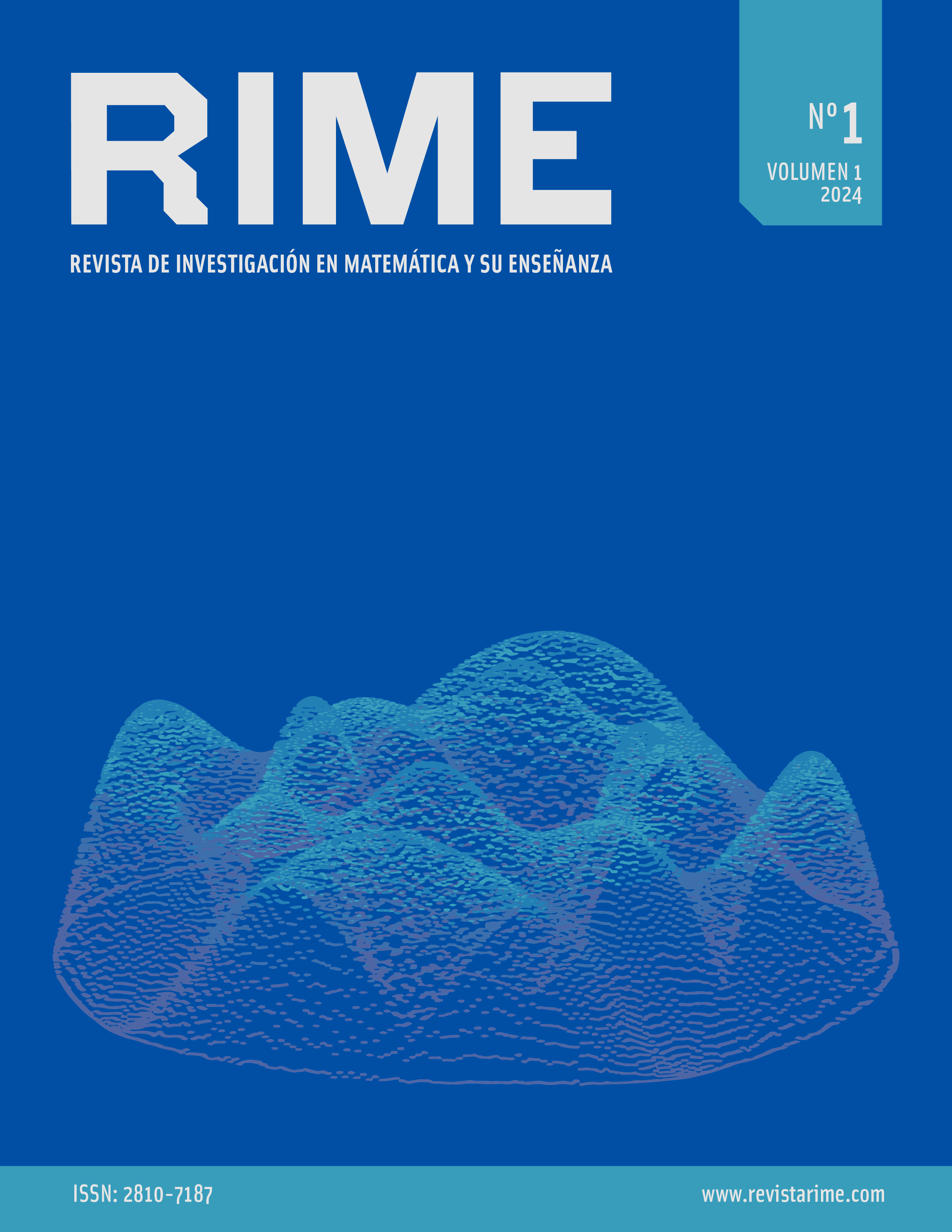MATHEMATICAL MODELING IN THE CLASSROOM: THE SPEED OF HIGH-PERFORMANCE ATHLETES IN A 100 METER RACE
Main Article Content
Abstract
In this article we address a modeling-based learning situation using models for position, velocity and acceleration built theoretically, and estimated from real data. In particular, this work extends the theoretical model proposed by Gómez, Marquina and Gómez [2] for Usain Bolt's performance in the 100 m race, which earned him the world record during the 2009 Berlin World Championships. to adapt it to the other runners of that event. More precisely, a nonlinear model is fitted by least squares to the corridor data reported in Graubner and Nixdorf [3]. From these models, a proposal is developed for their implementation and management in a secondary level mathematics class, taking the Borromean modeling cycle [1] as a framework of reference, with the aim of presenting a possible management strategy. for his work in the Mathematics classroom with students aged 15 to 16.
Article Details
Downloads

This work is licensed under a Creative Commons Attribution-NonCommercial 4.0 International License.
References
2. Gómez JH, Marquina V, Gómez, RW. On the performance of Usain Bolt in the 100 m sprint. European Journal of Physics. 2013; 34(5): 1227. https://doi.org/10.48550/arXiv.1305.3947
3. Graubner R, Nixdorf E. Biomechanical analysis of the sprint and hurdles events at the 2009 IAAF World Championships in Athletics. New Stu-dies in Athletics. 2011; 1(2): 19–53.
4. Ministerio de Educación Nacional de Colombia. Estándares básicos de competencias en matemáticas. Potenciar el pensamiento matemático: ¡un reto escolar! 2006; pp. 46–95.
5. Vasco CE. El pensamiento variacional y la modelación matemática. Conferencia en Congreso Internacional: Tecnologías Computacionales en el Currículo de Matemáticas; 8–10 Mayo 2002; Bogotá.
6. Blum W, Niss M. Applied mathematical problem solving, modelling, applications, and links to other subjects. State, Trends and Issues in Mathematics Instruction, Educational Studies in Mathematics. 1991; 22(1): 37–68. https://doi.org/10.1007/BF00302716
7. Aravena M, Caamaño C, Giménez J. Modelos matemáticos a través de proyectos. RELIME. 2008; 11(1): 49–92.
8. Blomhøj M. Mathematical Applications and Modelling in the Teaching and Learning of Mathematics. Proceedings from Topic Study Group 21 at the 11th International Congress on Mathematical Education; 8–10 Julio 2008; Monterrey. Roskilde Universitet.
9. Aseeva OM. Modeling as a method of cognition of the surrounding real-ity. Molodoy Uchenyy [Young Researcher]. 2021; 6(348): 403–404. https://doi.org/10.1002/sce.20177
10. Schwarz CV, Gwekwerere YN. Using a guided inquiry and model-ing instructional framework (EIMA) to support preservice K‐8 science teaching. Science Education. 2007; 91(1): 158–186. https://doi.org/10.1002/sce.20177
11. Kaiser G, Sriraman B. A global survey of international perspectives on modelling in mathematics education. ZDM. 2006; 38: 302–310. https://doi.org/10.1007/BF02652813
12. Camarena, PC. La matemática en el contexto de las ciencias y la modelación. Cuadernos de Investigación y Formación en Educación Ma-temática. 2012; 7(10): 183–193.
13. Galbraith P, Stillman G. A framework for identifying student blockages during transitions in the modeling process. ZDM. 2006; 38(2): 143–162. https://doi.org/10.1007/BF02655886
14. Janjic NJ, Kapor DV, Doder DV, Doder RŽ, Savic BV. Model for the determination of instantaneous values of the velocity, instantaneous, and average acceleration for 100-m sprinters. The Journal of Strength & Conditioning Research. 2014; 28(12): 3432–3439. https://doi.org/10.1519/JSC.0000000000000606
15. Parrington L, Phillips E, Wong A, Finch M, Wain E, MacMahon C. Validation of inertial measurement units for tracking 100 m sprint data. ICBS Conference Proceedings Archive; 18–22 Julio 2016; Tsukuba.
16. Ritchhart R, Church M, Morrison K. Hacer visible el pensamiento. Cómo promover el compromiso, la comprensión y la autonomía de los estudiantes. Buenos Aires: Paidós; 2014.
17. Ferro SA. La carrera de velocidad: Metodología del Análisis Bio-mecánico. Madrid: Librerías Deportivas Esteban Sanz; 2001.
